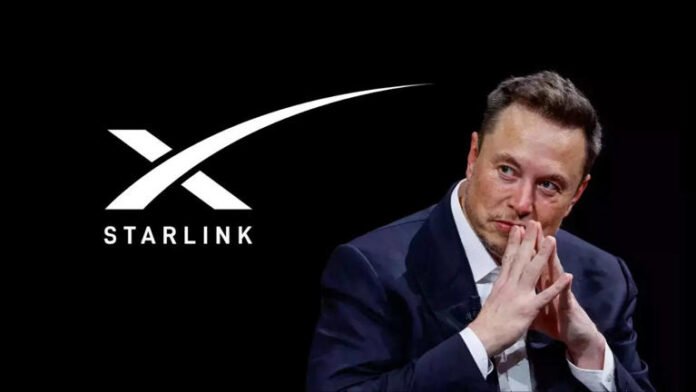Indian telecommunications giant Airtel has partnered with Elon Musk’s SpaceX to bring Starlink’s super-fast satellite internet service to India. This collaboration promises to revolutionize the internet landscape in the country, particularly in remote and underserved regions where traditional broadband infrastructure has struggled to make a significant impact. With SpaceX’s cutting-edge Starlink technology and Airtel’s extensive network, the alliance is poised to provide millions of Indians with high-speed, reliable internet access, marking a new era of connectivity in the subcontinent.
The Significance of the Partnership
Airtel, one of India’s largest telecom operators, has long been at the forefront of enhancing digital connectivity across the country. By joining forces with SpaceX, which has already established a global reputation for its satellite internet service, Airtel is positioning itself as a key player in the future of internet accessibility in India. The collaboration aims to deliver Starlink’s low-latency, high-speed internet to users, even in the most difficult-to-reach areas.
Starlink, a satellite constellation consisting of thousands of small satellites orbiting the Earth, is designed to provide high-speed internet to underserved or remote regions, bridging the digital divide. The service operates in the low Earth orbit (LEO) range, making it faster and more reliable than traditional satellite internet providers, which typically use geostationary satellites. With Starlink, users can experience download speeds of up to 100 Mbps and latency as low as 20 milliseconds, depending on the location and other factors.
Expanding Connectivity in Rural and Remote Areas
India, a country with over 1.4 billion people, has made significant strides in improving internet penetration over the past decade. However, a substantial portion of the population, especially in rural and remote areas, still lacks access to reliable broadband. According to the Ministry of Electronics and Information Technology (MeitY), approximately 300 million people in India remain offline, largely due to the unavailability of high-quality internet infrastructure in rural regions.
The partnership between Airtel and SpaceX’s Starlink is expected to address this gap by offering satellite-based broadband services in areas where laying cables and setting up terrestrial networks is challenging, both due to geographical factors and the high cost of infrastructure development. Through Starlink’s satellite constellation and Airtel’s established distribution channels, the collaboration aims to deliver internet access in even the most isolated corners of India.
Moreover, the alliance aligns with India’s Digital India initiative, a government program aimed at transforming India into a digitally empowered society and knowledge economy. Providing high-speed internet access to rural areas is a crucial part of this vision, and the Airtel-SpaceX partnership is a significant step toward realizing it.
Faster Internet, Economic Growth, and Innovation
The arrival of Starlink’s super-fast internet service in India is expected to have far-reaching implications for both individuals and businesses. In rural areas, where internet speeds are often slow and unreliable, access to high-speed internet could unlock opportunities in education, healthcare, e-commerce, and agriculture, among other sectors.
For students in remote villages, reliable internet access can help bridge the education gap by enabling online learning and access to digital resources. Similarly, farmers could leverage real-time data and weather forecasts, as well as digital platforms to connect with markets and improve their productivity. In the healthcare sector, telemedicine services could become more widely accessible, allowing rural patients to consult with specialists and receive timely medical advice.
On the business front, entrepreneurs and small businesses will benefit from better connectivity, expanding their reach and boosting innovation. The partnership could also help India’s growing tech sector, providing startups and developers with the tools they need to create more innovative digital solutions.
Competition and Challenges Ahead
While the Airtel-SpaceX partnership marks a significant step forward for India’s digital landscape, there are still hurdles to overcome. For one, the cost of Starlink’s services will need to be competitive enough to appeal to the Indian market, where price sensitivity is a major factor in consumer decision-making. SpaceX has yet to announce pricing for the Indian market, and the success of the partnership will depend largely on its ability to provide affordable internet services.
Additionally, regulatory approvals and compliance with India’s telecommunications policies will be key factors in the roll-out of Starlink’s services. SpaceX has already begun regulatory talks with Indian authorities, and the partnership with Airtel will help navigate these challenges. The rollout process will also require robust infrastructure on the ground to support satellite terminals and the management of network traffic.
Lastly, competition from other local and global telecom players will be a factor. India’s telecom sector is highly competitive, with companies like Reliance Jio, Vodafone Idea, and BSNL already providing internet services to millions of consumers. While the satellite-based internet model has its unique advantages, including faster deployment in rural areas, it will still face competition from traditional fiber-optic and 4G/5G networks.
Looking Forward
The collaboration between Airtel and SpaceX marks a transformative moment for India’s internet landscape, promising to bring high-speed satellite internet to the country’s remotest regions. This partnership has the potential to close the digital divide, empower millions of Indians with access to reliable internet, and drive economic growth in various sectors. As both companies work toward rolling out the service in India, the broader impact of this innovation will be felt for years to come, laying the foundation for a more digitally connected and prosperous future for the nation.

